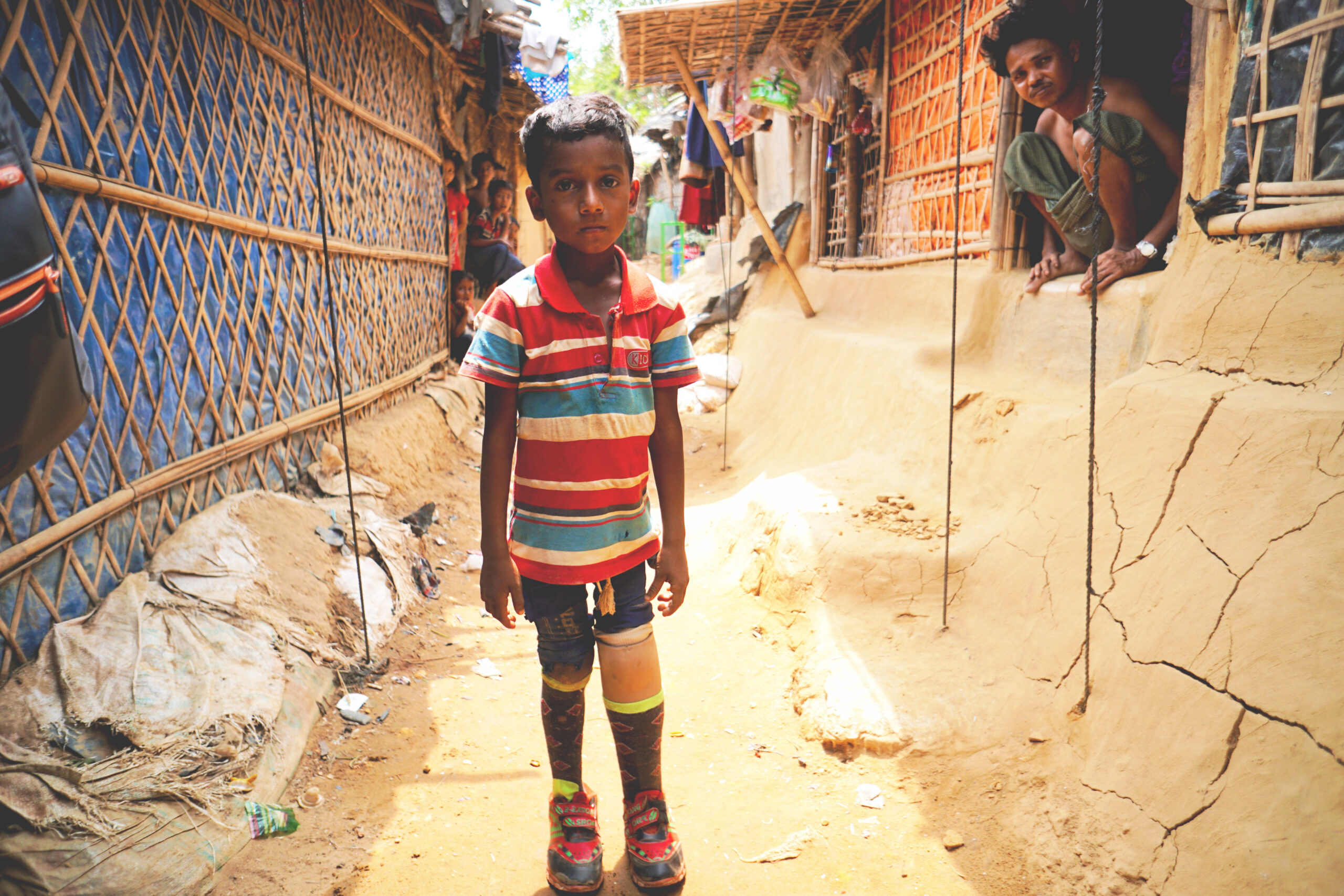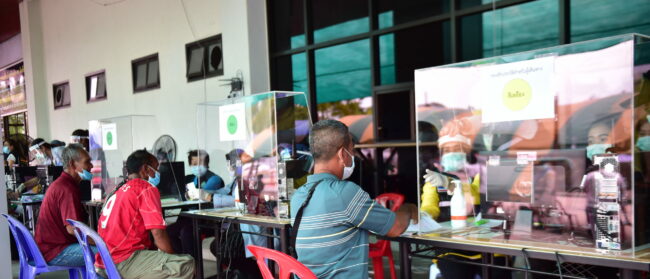This is the story of Saiful, a ten year-old boy from Maungdaw, Myanmar.
He was one of three Rohingya refugees I encountered in the camps of Bangladesh who were in need of prosthetic limbs. After they received them, the largest circulation Bengali newspaper announced that they were on their way to “new dreams with artificial legs”. That was in 2019. A year later, in December 2020, Saiful was on his way to the remote and controversial island of Bhasan char.
Within five months, Saiful’s dreams would come to an abrupt end. He died in May of 2021. The cause of his death is unknown and his family have not been provided with a death certificate.
I first met Saiful in 2017 by the cemetery in Kutupalong Camp 2E. With just shorts on and no top or sandals, Saiful was hopping along on one leg faster than I could run. He was a tiny figure of a boy with an amputated leg. He did not have crutches – the fact that one of his legs had been amputated below the knee did not seem to matter to him or affect his activity level.
Once I saw him riding a bike perfectly competently and with ease in the playing field atop Kutupalong Registered Camp. He seemed to be very popular judging by the number of little friends he had.
This was well before the catastrophic events of August 2017 in Rakhine state and the arrival of 740,000 Rohingyas in Bangladesh. It was when the makeshift part of Kutupalong refugee camp was relatively uncrowded. Paths and walkways were nowhere near as congested and the myriad informal shops had not yet sprung up.
In and amongst the shacks, children played with bottle tops, and various bits of plastic scrap or with nothing. They had no schools to go to and grew up mostly illiterate, and with unsettling futures. Saiful was one of these children, and he had one leg.
I reached out to the International Committee of the Red Cross (ICRC) for a prosthetic leg for Saiful. After many delays, they were able to provide a leg for him. It was never a great fit, and he never grew used to it. And when repairs were needed, they were never timely. It was another attempt at a leg repair, this time whilst on the island of Bhasan Char, that cost Saiful his life.

Saiful’s short life is the Rohingya tragedy writ small. The year 2012 was a turning point for the Rohingya in Rakhine State. There was violence and mass arrests. Hundreds of thousands of Rohingya were corralled into displacement camps.
That year was also a turning point in the life of Saiful and his family. Their escape from Myanmar was near fatal for Saiful who was then a toddler of 18 months. En route to Bangladesh from Nagkura, Myanmar, he and his father, Mohammed Rafique, became separated from the rest of the family. Rafique was shot dead near the border. Saiful sustained a leg injury, with other fleeing Rohingya able to rescue him. Once Saiful had crossed into Teknaf, Bangladesh, he was reunited with his mother, Ayesha, after public loud hailer announcements.
Bad luck followed Saiful. Within a few months of his arrival, he was involved in a road accident and the same leg that was injured at the border was hurt in the accident. Quality of medical care was very limited, with Bangladesh banning Médecins Sans Frontières (MSF) in August of 2012 claiming that NGOs like MSF, Action Against Hunger and Muslim Aid were attracting the influx. Saiful’s leg became infected and resulted in it having to be amputated.
For three days they were stuck in the boat anchored some distance from the shore. During that time, it rained. Saiful and others were drenched all the time. Saiful became ill.
Saiful’s next major journey was to be his last. His relatives had been listed to go to the controversial island of Bhasan Char. Ayesha was in two minds but as family members were going, she saw no other option. At the time of the move, Saiful’s prosthetic limb required repair. Five months after arriving on Bhasan Char, Ayesha received permission to attend Noakhali General Hospital for referral to Chittagong where ICRC would repair the limb. From here the story gets murky.
According to Ayesha, she stayed eight days at the Noakhali Sadar hospital. They informed her that they could refer Saiful to the ICRC but she would have to pay her own onward travel costs. Ayesha could not afford it and decided to go back to Bhasan Char. She and other Rohingya who had received treatment at the hospital boarded a small boat to return to the island.
A normal journey to Bhasan Char involves a three to five-hour boat ride. However, bad weather and storms meant that it took Saiful’s boat three whole days. For three days they were stuck in the boat anchored some distance from the shore. During that time, it rained. Saiful and others were drenched all the time. Saiful became ill, and eight days after arrival in Bhasan Char, he passed away. Ayesha said that he had become bloated, and that his eyes had turned yellow.
It is said that the lives of refugees tell us much about our own lives. Particularly about our prejudices. The death of Saiful and the lack of oversight with his case tells us volumes about the various organisations which are involved in the “management” of refugees. A level of management where even a child’s death does not merit a death certificate.
The reality is that for the Rohingya in Bangladesh, there is not even the feeblest enforcement of their rights. Bureaucratic forces make their lives both demeaning and dangerous. Rohingya have been pauperised and their political and economic management now involves high-risk strategies in every sense and amount to a blue-print for long term trouble.
Rather than paying systematic attention to chronic problems such as education, malnutrition, water and sanitation, Bangladesh has come up with “solutions” that expose Rohingya to massive risks and further pauperisation.
Ayesha, Saiful’s mother, has been robbed of the pleasures and responsibilities of parenthood. She was well aware that as a refugee, Saiful would never climb any socioeconomic ladder. He would never receive an adequate education and he would never be able to formally learn the language of the country he was living in. She was prepared for those realities and for the fact that, as impoverished refugees, their lives were at a dead-end.
Ayesha was not, however, prepared for Saiful to be dead at the age of ten.
Shafiur Rahman is a documentary maker working on Rohingya issues.



